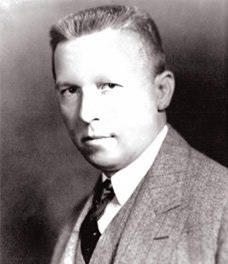Rosario Candela—lauded as a “Master of Floor Plans”—was one of the preeminent architects of New York City with an ego to match despite his modest beginnings. Candela immigrated to the United States from Sicily at the prime age of 19 in the year 1906 to work with his father as a plasterer. He returned to Italy for his studies, but ultimately made the United States his permanent home in 1909.
Candela honed his craft at the Columbia University School of Architecture—where he was notorious for surrounding his drafting table with a velvet rope so other students couldn’t copy his work. Upon graduation in 1915, Candela earned his first job as a draftsman under Gaetan Ajello—also a Sicilian-American who designed thirty-eight apartment buildings during his career. Candela then went on to work briefly with Frederick Sterner—the NYC architect famous for his renovations of Gramercy Park brownstones.
In 1920—just five years after graduation—Candela started his own business. In the face of discrimination against immigrants, Candela succeeded. In his career, he and James Carpenter—who had a similar architectural style—designed over 125 residential buildings in Manhattan. Fellow Italian-American developers Anthony Campagna and Michael Paterno commissioned Candela early in his career for several works including 775 Park Avenue in 1926—one of Candela’s classic, pre-war apartment buildings scattered throughout the Upper East Side.
The exterior of Candela’s buildings did not seem extravagantly grand like the mansion homes of the elite or the colossal towers like The San Remo that would soon dominate The Upper West Side skyline. However, the interiors were a completely different story, and also the reason a Candela Triplex can sell for as much as $50 million in the modern market.
Rosario Candela knew exactly how to appeal to the lux tastes of New York’s elite. He separated his floor plans into three categories: reception space, private space, and servant space. Candela ascertained that bathrooms were accessible from reception spaces without having to go through private, bedroom space. He wisely placed servant-related rooms like kitchens in between the other two spaces so that both areas were easily accessible.
He applied his principle of separate living spaces to his entire building layout. Somewhat controversially, Candela even implemented a third elevator specifically for servants so that residents could avoid engaging with them in 770 Park Avenue.
This NYC architect also paid close attention to the smaller details. Anyone entering his carefully planned pre-war apartments immediately had a view of a window or fireplace. The walls of all apartments were also thickened so that internal wiring and pipes were no longer exposed—at a time when it was common practice to leave these components uncovered. Because Candela designed rooms to have the similar sizing, residents could more easily convert rooms. This was difficult to accomplish with the typical model of the time when rooms were of all different sizes. One of his best ideas was to position radiators lower, so that windows could be taller. This allowed more light inside, but it also made ceilings appear taller.
As wonderful and palatial as Rosario Candela’s designs were, he was not immune to the Great Depression. His commissions dropped from twenty-six in 1929 to one in 1931. However, that did not stop him from working. He learned the intricate techniques of cryptography and cracked the code of Commandant Étienne Bazeries—a brilliant cryptologist who developed an “unbreakable” encryption method. Candela published The Military Cipher of Commandant Bazeries, started teaching cryptography at Hunter College, he wrote another book—Isomorphism and Its Applications in Cryptoanalytics—while still completing the occasional commission.

